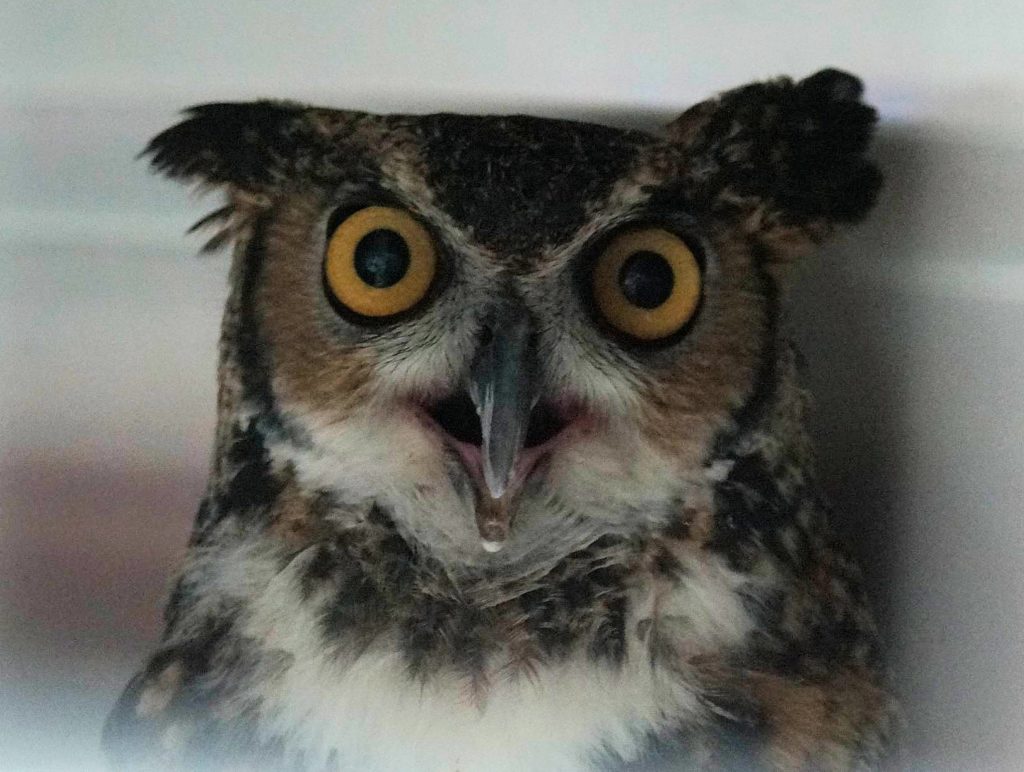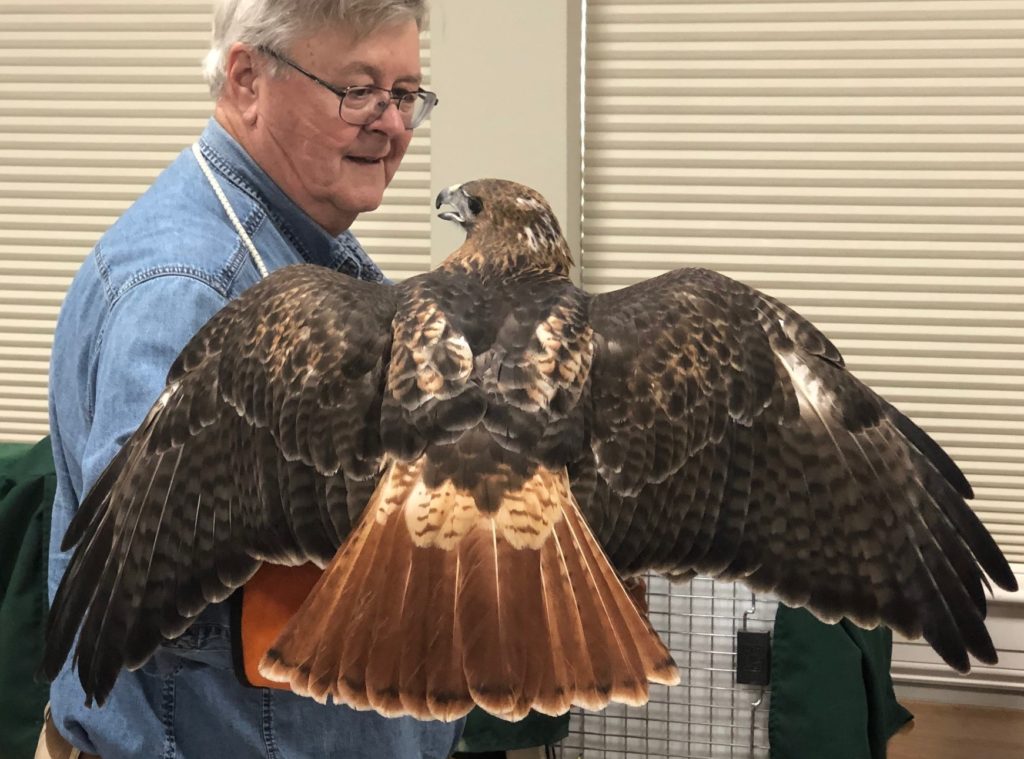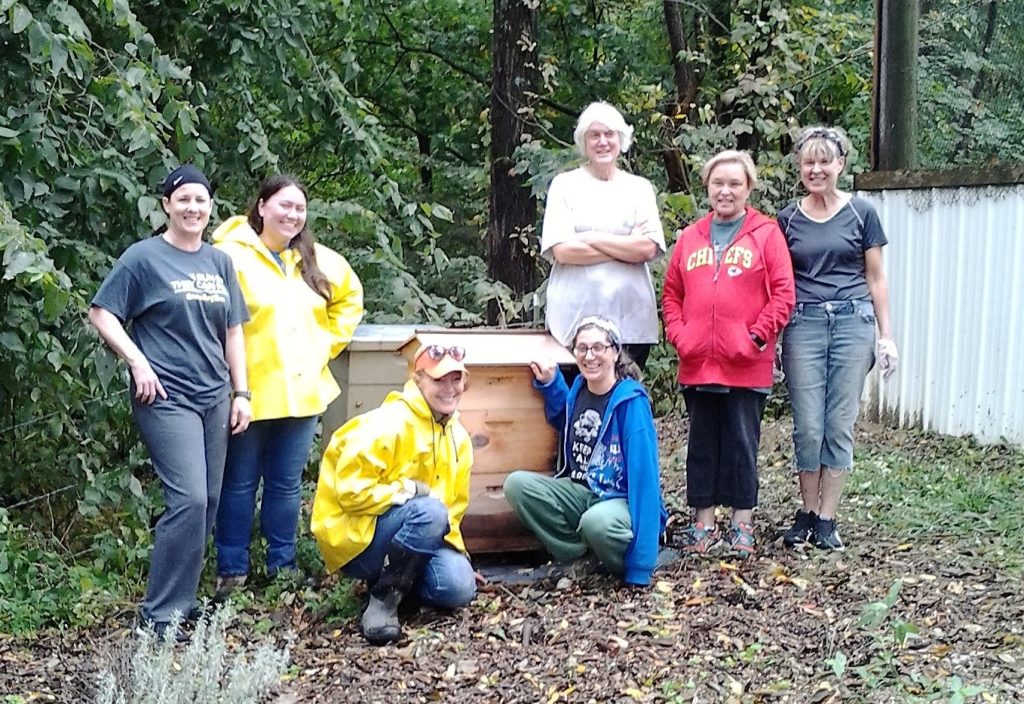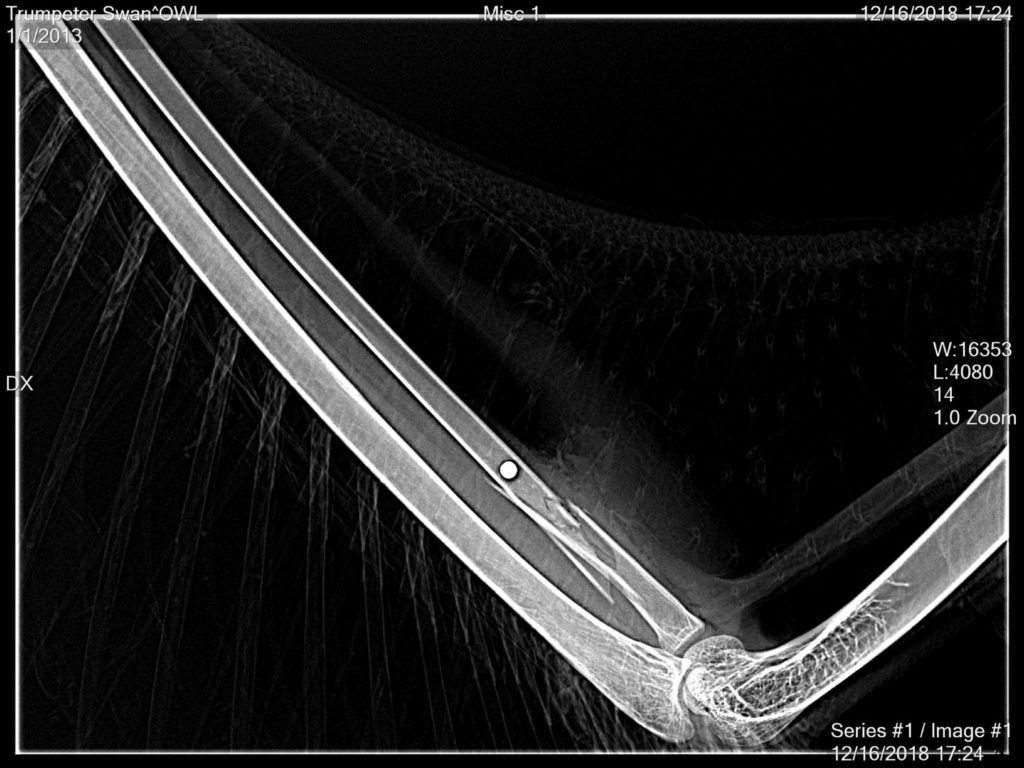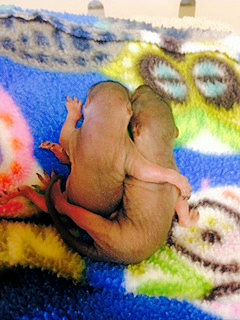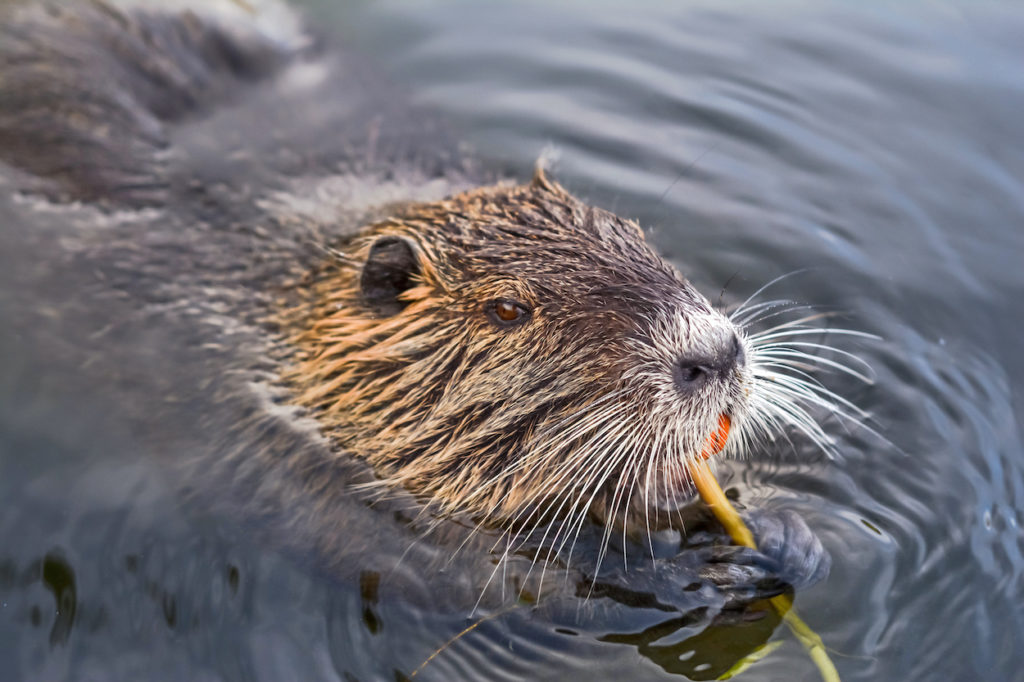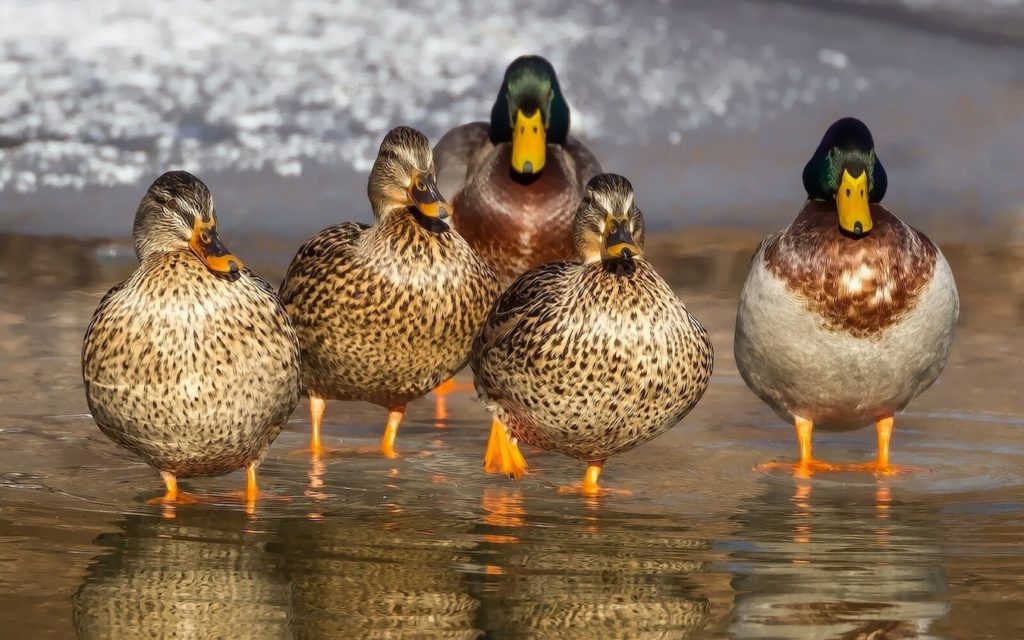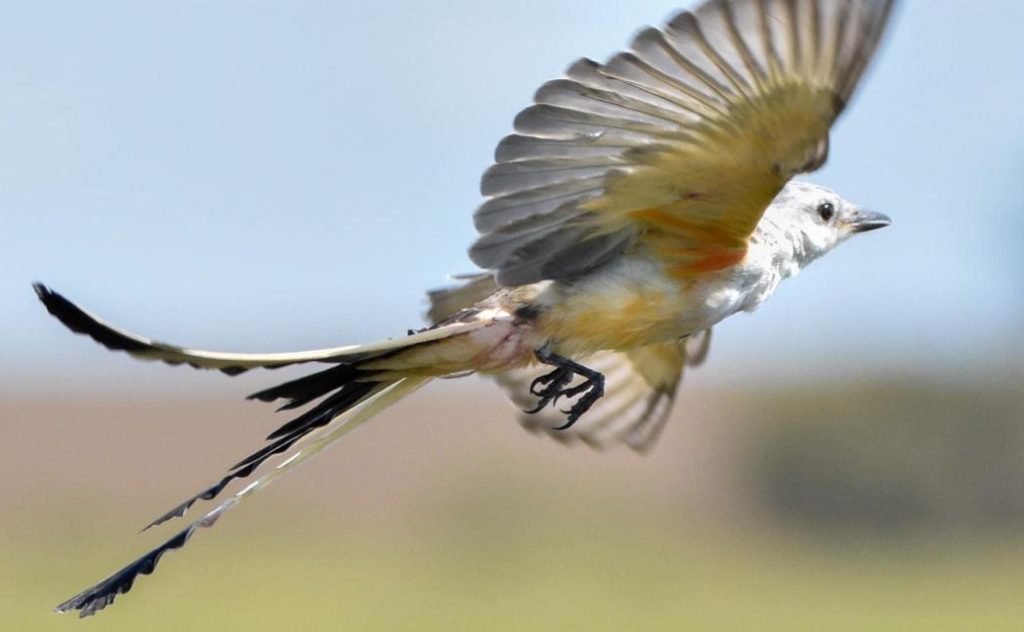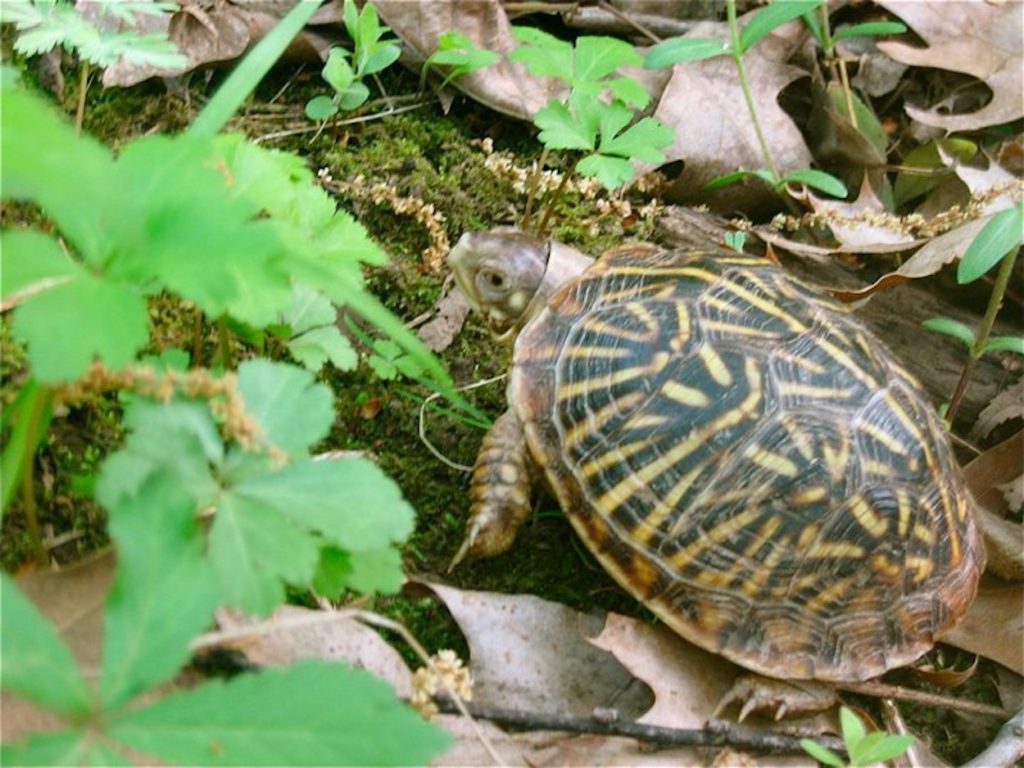About
Beavers
Beavers have earned the nickname “Nature’s Engineers” for their amazing ability to build a dam that is completely watertight in under 24 hours. They dam an area, flood it, and end up providing necessary habitat for shorebirds, waterfowl, drinking water for mammals, soil for aquatic plant life, expanded areas for fish to feed, and incredible rebirth in lands that really need it.
Even in Chernobyl, many years after the accident, the beaver’s return to the area is having an amazing effect. Their dams have allowed the woods surrounding the nuclear plant to begin anew and recover rapidly from their radioactive state. These dams now support all kinds of wildlife such as bison, moose, wolves, waterfowl, eagles, mink, and many others. The time that researchers expected to have to pass before this land was inhabitable again has been cut in half because of the beaver’s hard work.
Beavers in the Midwest give birth to their young early in the year—usually January and February. Beavers are very family oriented. They are one of the few animals who truly are monogamous. If mom or dad die, the surviving partner will never mate again.
The baby beavers stay with mom for the first 8 to 12 weeks, and dad moves into a nearby den to leave them alone. When mom is ready to wean, she moves next door, and dad takes over. Because dad doesn’t have milk, the kids must learn to eat grasses, plants, and other aquatic plant life.
Beaver children end up living with their parents for two years or more before moving out on their own. Even then, they live only a bit downriver and never completely leave the family. Studies have shown that the older kids return to the parent’s den to help during a hard winter, particularly during harsh weather.
Because of their extremely long childhood, beavers make for difficult and expensive rehab patients.
Caught by Pets
Cats
Cats have mouths full of bacteria that can kill an animal in a short time. All animals caught by a cat need to be brought in for medication and rehabilitation, even if you can’t see wounds.
Dogs
If a dog brings you an animal, bring it in immediately. Dogs have powerful jaws that can create crushing injuries.
Orphan
Baby beavers sometimes get swept downstream, especially when rivers are flooding. Contact OWL immediately.
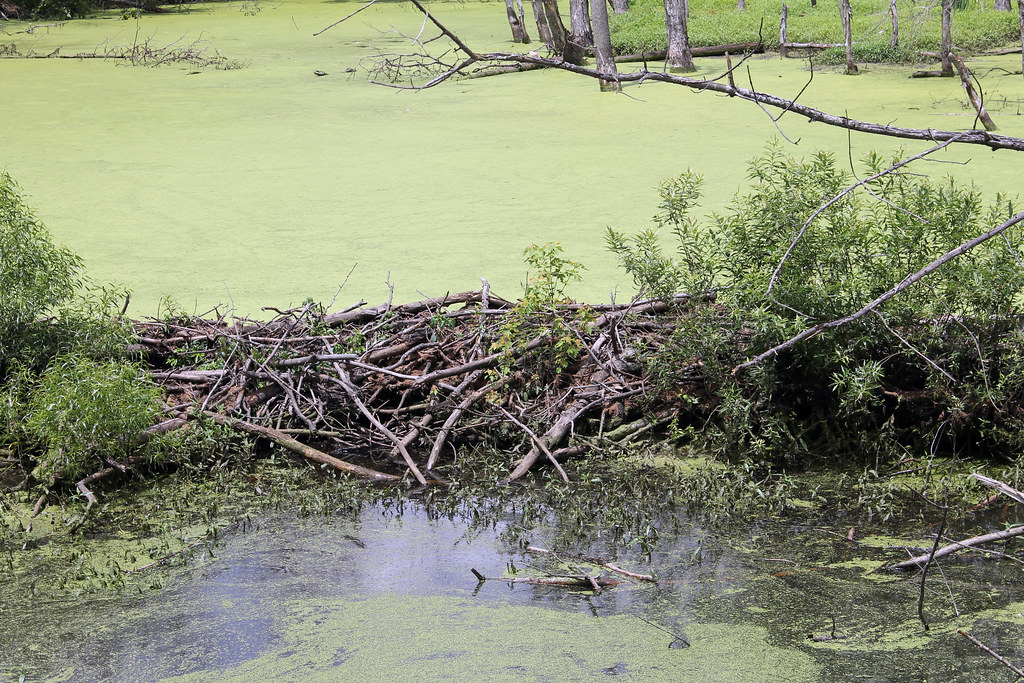
What to do
Beavers Building Dams and Flooding Areas
Beavers are attracted to the sound of running water, and they attempt to dam the smallest possible crossway where there is running water. This explains why they love your neighborhood culvert or drainpipe. Usually culverts are metal pipes that echo the sound of running water, making them even more attractive to our beaver friends. Add to this the fact that a culvert’s width is minimal compared to the neck of a river, and it makes for the perfect dam site for the beavers.
The first step to handling a beaver conflict is knowing to abstain from tearing down the dam. That’s because you’ll never win the battle with these construction geniuses. You can spend 12 hours removing a dam, and a beaver can rebuild it in two hours the next day. The only successful, humane solution to a beaver problem is a dam deterrent. There are many plans and resources available online to assist you in building a dam deterrent.
Signs of Injury
If you notice any of these issues, call OWL as soon as possible:
- Cold and lethargic.
- Covered with fleas, ants, ticks, or flies/fly strike (looks like small clusters of rice anywhere on the animal).
- Dehydrated.
- Has been fed any kind of formula or food.
- Has been in a cat’s or dog’s mouth.
- Broken limb, cuts, or bruises.
- Head tilt.
- Bleeding.
- Unable to stand or move without falling over.
Common Concerns
Beavers do not stray far from their water source and home. Because of this, you can focus your effort on the trees that surround the damming area instead of treating the entire neighborhood. The simplest solution for tree damage is to install tree guard fencing at the base of the tree. You can purchase welded wire or even chain link and install around the trunk of trees. Beavers do not climb or dig under the tree guard, making this an effective solution.
Another option is to mix one quart of exterior latex paint with five ounces of Mason sand. Mix and paint the trunks of trees to discourage chewing. However, it must be applied often and liberally, and rain can wash it away quickly. The abrasive paint option is a more temporary solution than fencing.
Another option is a product called Tree Guard, available at hardware or home and garden stores. Spray at the base of the tree to deter the beavers. It also washes away with rain and must be reapplied often.
Many have had success with electrical fencing. Fence off the area along the pond or lake where the beavers are living. Two strands of 12-gauge wire at six and 10 inches off the ground off the ground should be enough to deter the beaver. Run a straight line and attach a solar charger. Beaver can’t climb, and a mild electrical shock will send them back into the water. They are smart and will learn to stay away from the area.
Beavers are attracted to the sound of running water, and they attempt to dam the smallest possible crossway where there is running water. This explains why they love your neighborhood culvert, or drainpipe. Usually culverts are metal pipes that echo the sound of running water, making them even more attractive to our beaver friends. Add to this the fact that a culvert’s width is minimal compared to the neck of a river, and it makes for the perfect dam site—for the beavers, probably not for you or your neighborhood.
The first step to handling a beaver conflict is knowing to not attempt to tear down the damming materials yourself. Also, you’ll never win the battle with these construction geniuses. You can spend 12 hours removing a dam, and a beaver can rebuild it in two hours the next day. The only successful, humane solution to a beaver problem is a dam deterrent. There are many plans and resources available online to assist you in building a dam deterrent.
Beavers are as much a part of our waterways as the water itself. Here are a few of the benefits:
Conserve Water – Beavers make many small dams, each based on hydrological principles and maintained regularly so that they hold back water while allowing excess to seep through or flow over. Water impounded behind their dams in rainy times is held in reserve for times when there is no rain.
Prevent Flood & Drought – Water held back along the course of the stream descends in steps over a series of baffles, thus avoiding flooding during sudden or prolonged rains or periods of rapid melting. Floods are prevented, and the droughts that follow floods (because water has all rushed away) are minimized.
Control Soil Erosion – The reservoirs created by beaver dams slow the flow of water, lessening erosion. In addition, beavers spend much time shoring up the banks of streams by dredging mud and debris from the bottom, swimming with it one double handful at a time, and after squeezing out excess moisture, depositing it on the bank. These shoreline chores are carried on continuously and persistently.
Keep Waterways Open – Beavers constantly deepen their underwater channels. Their work maintains the waterways in a condition of openness so that silting does not impede flow. They must have deep water for safety and are tireless in this aspect of their work.
Control Aquatic Growth – Beavers not only eat the bark and leaves of certain trees but also feed on aquatic growth, including the roots, stems, leaves, and flowers of water lilies, and other plants. Pickerelweed is a favorite food. They slurp up algae like green spaghetti and graze on streamside plants such as marsh purslane. They often eat alders and other shrub-like plants that clog streams.
Thin Out Trees – The favorite food tree of beavers is poplar or aspen. They also feed on swamp magnolia, swamp maple, birch, both sweet and sour gum, and an occasional oak, cherry, or pine. They prefer to cut trees close to water, thus keeping trees along the waterways thinned while keeping water tables high for neighboring forests. Since the poplar has long been considered by many as a “trash tree,” it has become scarce in many places. If necessary, it can be allowed to grow or reintroduced, and it would furnish food for beavers, offering an alternative food source instead of trees considered more valuable.
Prevent Forest Fires – Because beavers convert many a trickle into generous bodies of deep water, they contribute to availability of water for fighting forest fires. The width of the water itself may in some cases halt a fire that would otherwise spread to a farther shore.
Enhance Habitat for Other Wildlife – Beaver ponds are wonderful habitat for other creatures. Wood ducks not only live in the ever-flowing streams beavers provide, but nest in cavities created by large trees girdled and left standing by beavers. Deer, mammals, and a host of birds come to ponds and streams to drink. Beavers keep water present in times when beaver-less streams are dry, thus providing constant living conditions for aquatic or semi-aquatic life such as frogs, fish, turtles, and snakes.
Keep Water Tables High – Beavers hydrologically sound work provides a high-water table for the whole community drained by the stream. Visible water and underground water benefit from this work.
Provide People with Engaging Opportunity for Study – Beavers have a gift of unique intelligence and are gentle and trusting. Watching the family life of the beaver is an interesting experience. Beavers are most usually considered a nuisance if they cut down a tree or create minor flooding.
Moving of beavers creates considerable hardships. Like human homesteaders, they choose a place they find suitable, work hard to make it livable, and then are removed. Live trapping is almost unheard of and a snare trap grabs a leg and usually drowns the beaver after a struggle for air. Beavers mate for life. They maintain the floodplain which protects us all. We humans are created with a sense of thirst because our bodies need water. It’s the same with animals but, but beavers are born with a hydrological engineering ability because they also need water for safety. The streams need their care. For centuries, beavers stood between the birthplace of the streams in the mountains and the ocean to which the water flows. Beavers managed the water all along the way, providing for them while contributing to the welfare of their total environment and its inhabitants.
Taken from THE BEAVER DEFENDERS, N.J. 08344
The First Treatment for Shock or Injury: Warm, Dark, and Quiet
If you find an animal that is injured the most important thing you must do is to keep them warm and quiet. Follow these protocols.
Container
Put baby in a shoebox or other small container with several small air holes in the lid and a small non-terrycloth towel, fleece cloth, or t-shirt in the bottom. Tape the lid to keep secure.
Adult animals need to be contained in a dog or cat kennel.
Heating Pad
If you have a heating pad, set to low and place the box half on/off the pad, so babies can move away from the heat if they need to. OR
Rice Bag
You can also fill a sock or knee-high pantyhose with uncooked dry rice. Microwave the rice-filled sock for 30 to 60 seconds. This heat source will last about 20 to 30 minutes. Place the rice sock in the container under the towel, and place the baby on or near it, but not directly in contact with the rice sock. OR
Ziploc bag
Fill a Ziploc bag with warm (not hot) water, put it inside another Ziploc bag, and place under the towel next to the baby. The double bag guards against leaks and prevents the animal from getting wet and chilled.
Food/Water
Do not feed or give it anything to drink. Keeping the baby warm is more important than feeding it.
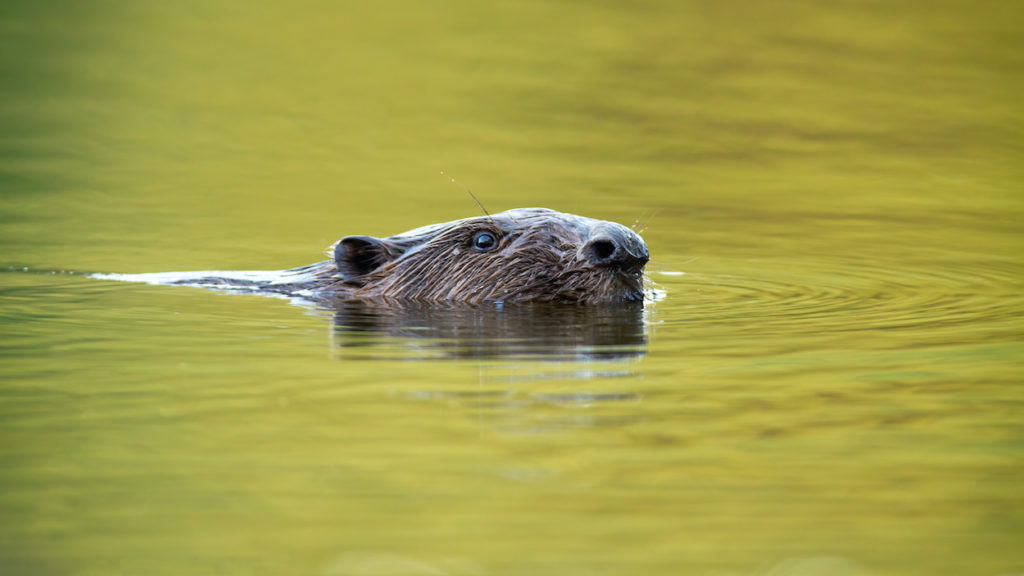
What to do
Why Pest Control Companies Don’t Work
- Beaver trapping does NOT work! Where there is beaver habitat, there WILL be beavers.
- Relocating beavers is extremely difficult, and most pest control companies will not do so.
- Pest control companies DROWN beavers after trapping them. Beavers are physically incapable of drowning and therefore slowly asphyxiated.
- It can take up to THIRTY-FIVE MINUTES for a beaver to “drown” before they asphyxiate and die. This is NOT a humane death.
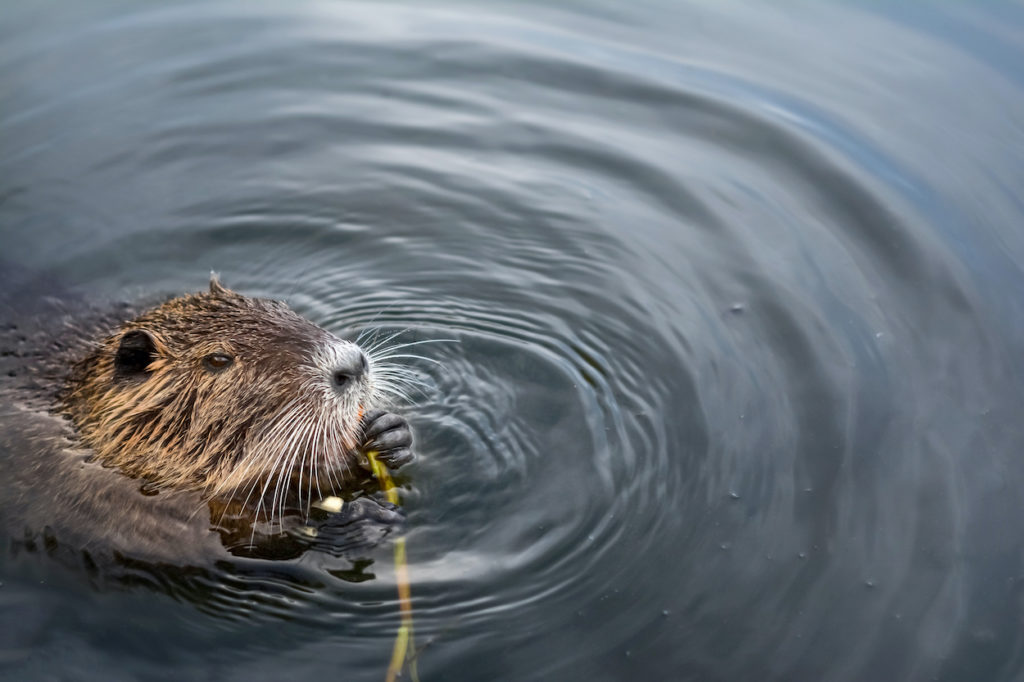
Contact Operation WildLife for help.

